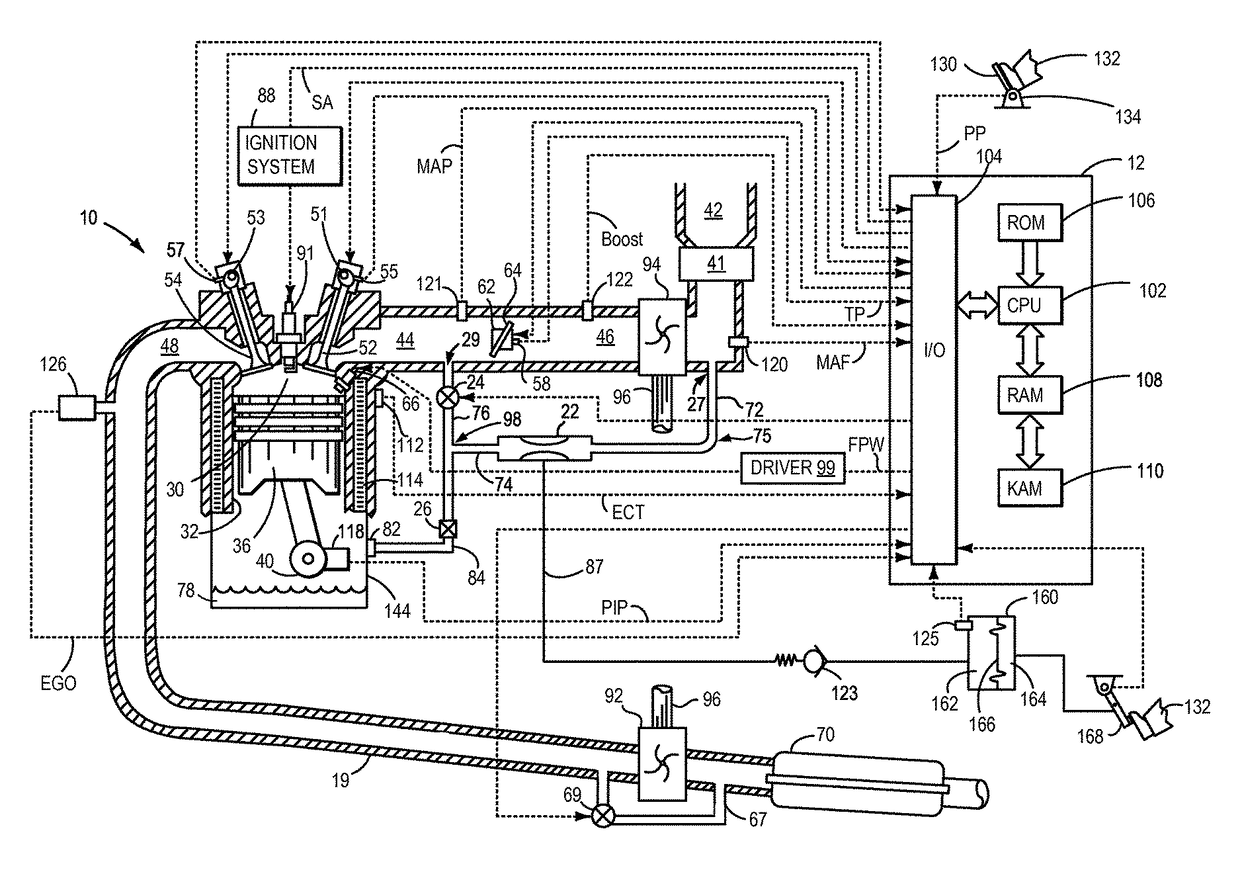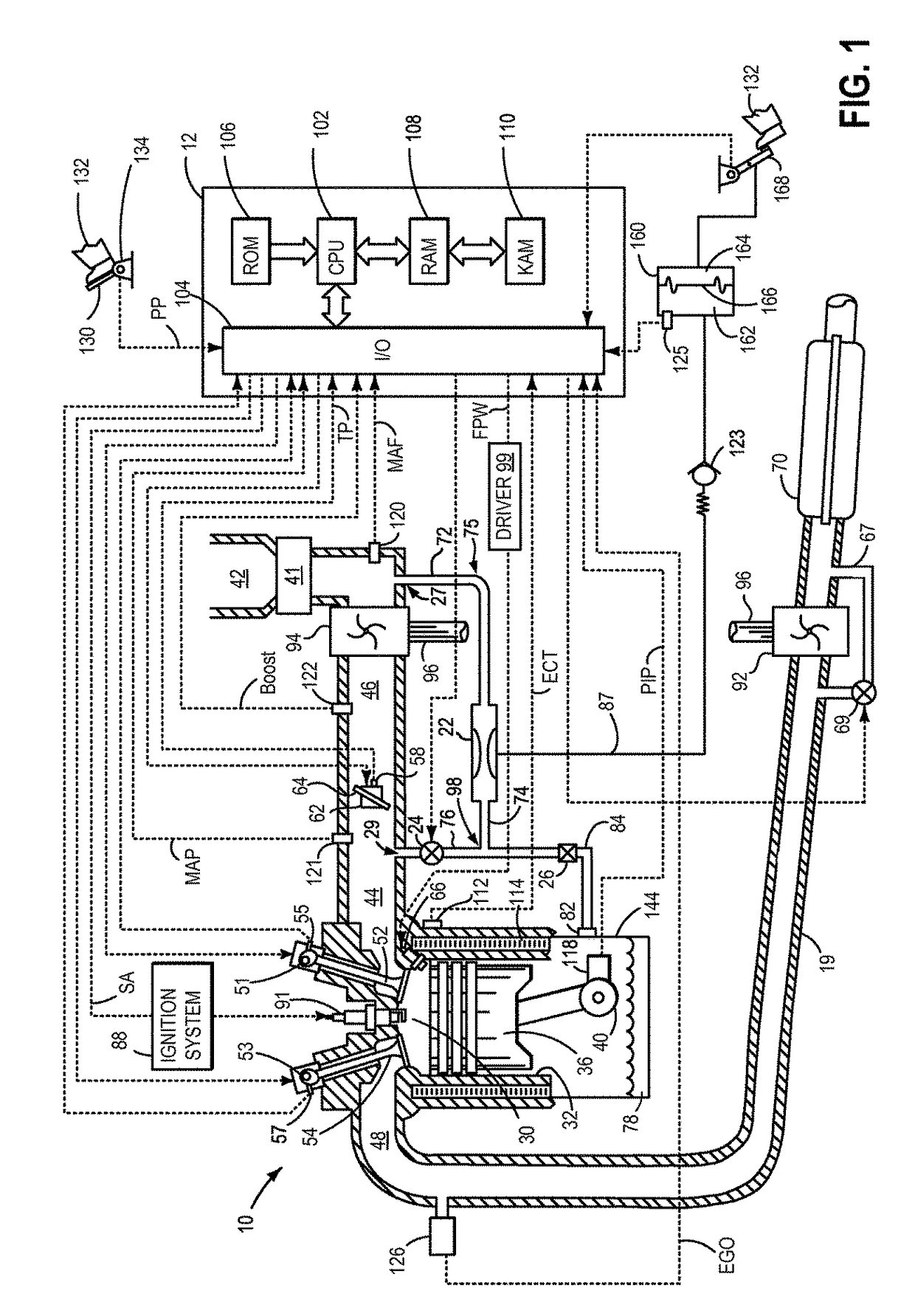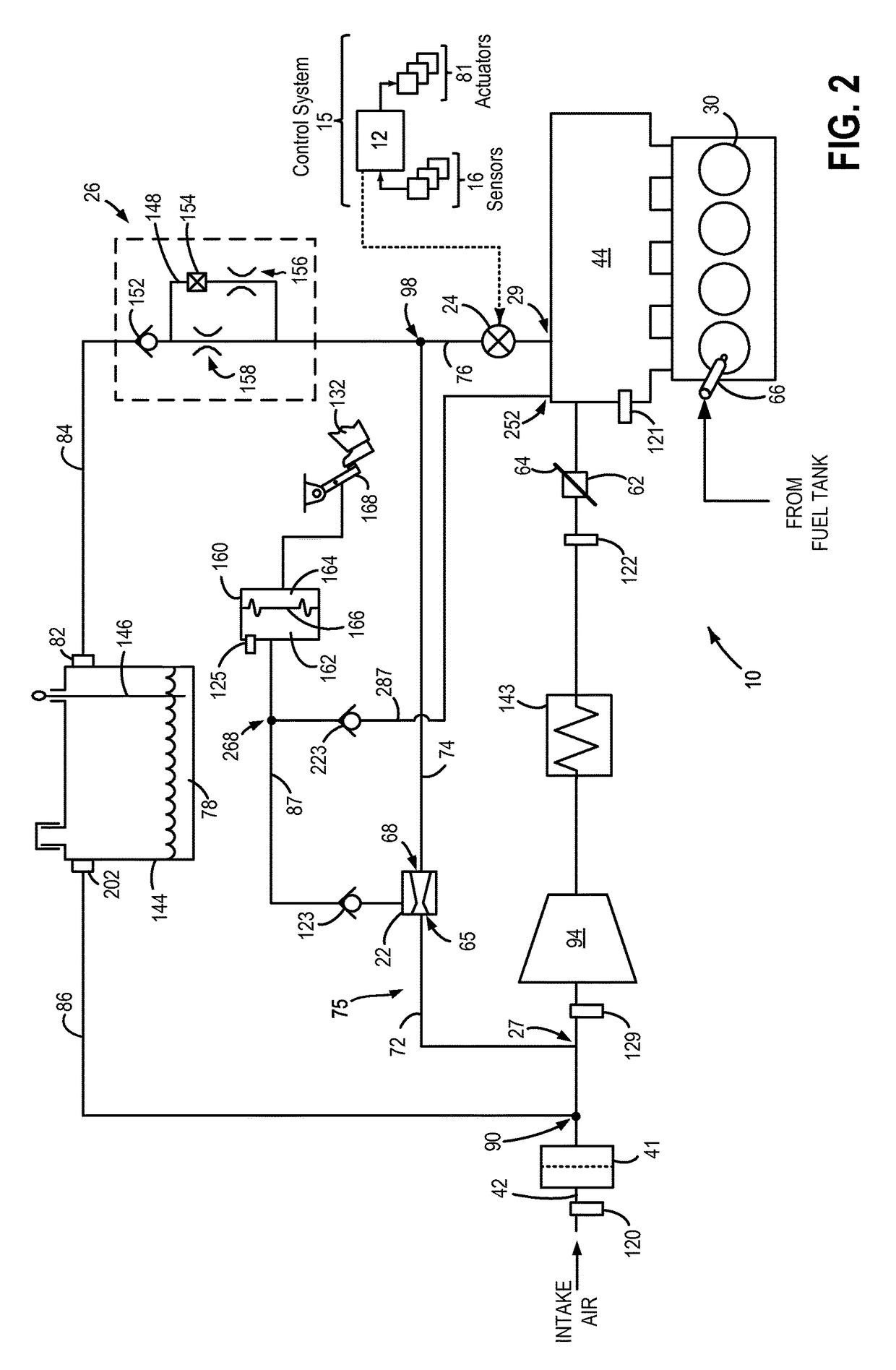Method for reducing air flow in an engine at idle
a technology of engine air flow and engine idle, which is applied in the direction of electric control, combustion-air/fuel-air treatment, machines/engines, etc., can solve the problems that the passive devices in the engine system may also affect the engine air flow during idle, and the fuel quantity may be additionally diminished during idle, so as to achieve the effect of reducing the amount of fuel, and increasing efficiency
- Summary
- Abstract
- Description
- Claims
- Application Information
AI Technical Summary
Benefits of technology
Problems solved by technology
Method used
Image
Examples
Embodiment Construction
[0016]The following description relates to systems and methods for reducing air flow in a boosted engine system, such as the engine system of FIGS. 1 and 2, during idle conditions. The engine system may ingest air from distinct sources (other than intake air flow) such as from a vacuum generating aspirator, a crankcase, a fuel vapor canister, etc. A common shut-off valve (CSOV) may be included in a common channel, the CSOV capable of regulating flow through each of the common channel, the aspirator, and a crankcase ventilation (CV) valve. The common channel may stream air flow from each of an aspirator and from the CV valve into an intake manifold of the boosted engine system, based on engine conditions. The CSOV may be adjusted by a controller to a fully closed position in response to idling conditions in the boosted engine system (FIG. 6) and air flow through the aspirator may be ceased along with CV flow. When the engine is not idling and pressure in the intake manifold is lower ...
PUM
 Login to View More
Login to View More Abstract
Description
Claims
Application Information
 Login to View More
Login to View More - R&D
- Intellectual Property
- Life Sciences
- Materials
- Tech Scout
- Unparalleled Data Quality
- Higher Quality Content
- 60% Fewer Hallucinations
Browse by: Latest US Patents, China's latest patents, Technical Efficacy Thesaurus, Application Domain, Technology Topic, Popular Technical Reports.
© 2025 PatSnap. All rights reserved.Legal|Privacy policy|Modern Slavery Act Transparency Statement|Sitemap|About US| Contact US: help@patsnap.com



